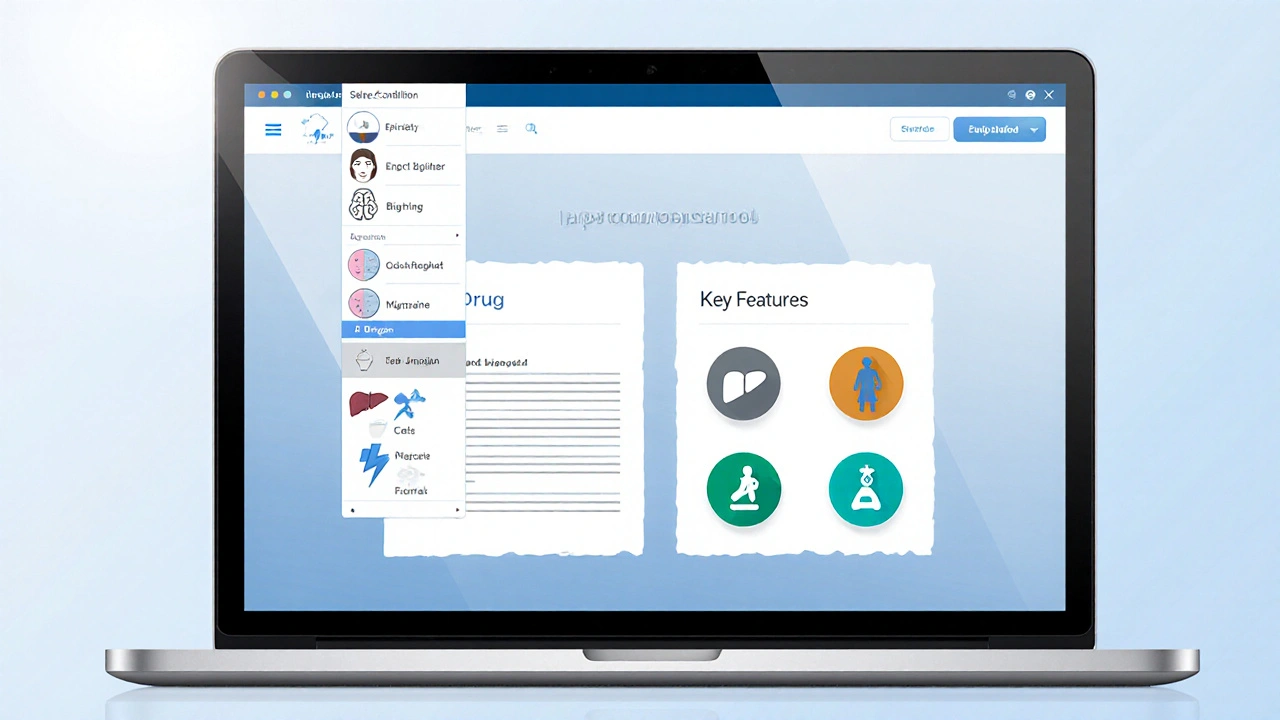When looking for Divalproex alternatives, options that replace the original drug for seizures, bipolar disorder, or migraine prevention, also called valproate substitutes, you’ll quickly see why understanding the landscape matters. The original Divalproex, a brand of valproic acid formulated as a delayed‑release capsule works by stabilizing neuronal firing, but it isn’t the only way to achieve that effect. Divalproex alternatives include generic versions, other anticonvulsants, and even some off‑label drugs that share similar mechanisms.
One major related entity is valproic acid, the chemical backbone of Divalproex. Its key attributes are a broad spectrum of seizure control, mood‑stabilizing properties, and a relatively low dose requirement. However, valproic acid carries risks like liver toxicity and birth defects, which push patients and doctors to explore generic anticonvulsants, such as topiramate or lamotrigine, that may have milder side‑effect profiles. Choosing an alternative often depends on the specific type of seizure, the presence of bipolar symptoms, or cost considerations.
First, identify the therapeutic goal. If you need seizure control, look at drugs that target the same sodium or calcium channels as valproic acid. If mood stabilization is the priority, consider agents like carbamazepine or lithium that have proven efficacy in bipolar disorder. Next, evaluate safety: patients of child‑bearing age should avoid teratogenic options, while those with liver issues need non‑hepatotoxic alternatives. Finally, weigh affordability—generic formulations of valproic acid can slash the price by up to 80 % compared with brand‑name Divalproex.
These three steps create a clear semantic triple: Divalproex alternatives encompass generic anticonvulsants, Choosing an alternative requires understanding seizure type, and Cost influences selection of mood stabilizer substitutes. By following this framework, you can move from a vague idea of “something else” to a concrete plan that matches your health profile and budget.
Another important entity is the concept of mood stabilizer therapy, which often overlaps with seizure treatment. Drugs like lamotrigine excel in both arenas, offering fewer weight‑gain concerns than valproic acid. For migraine prevention, topiramate serves as a dual‑purpose alternative, reducing headache frequency while also acting as an anticonvulsant. Recognizing these cross‑applications broadens your options and can simplify medication regimens.
Insurance coverage can also dictate which alternative is realistic. Many plans treat generic valproic acid as a tier‑1 drug, making it the cheapest route, whereas newer agents may sit in higher tiers requiring pre‑approval. Checking your formulary before switching saves time and prevents surprise out‑of‑pocket costs.
If you’re hesitant about switching, a gradual taper of Divalproex combined with a low‑dose starter of the new medication often eases the transition. Always involve your prescriber; blood level monitoring may be necessary to ensure therapeutic effectiveness without toxicity.
Beyond the drugs themselves, lifestyle factors act as supporting entities. Adequate sleep, balanced nutrition, and stress management can enhance the effectiveness of any seizure or mood‑stabilizing regimen, reducing the need for higher doses.
In summary, the world of Divalproex alternatives is diverse and navigable. Whether you’re after a cheaper generic, a safer option for pregnancy, or a medication that also tackles migraines, the key is to align the drug’s attributes with your personal health goals. Below you’ll find a curated list of articles that dive deeper into each alternative, compare side‑effects, and offer practical buying tips.
